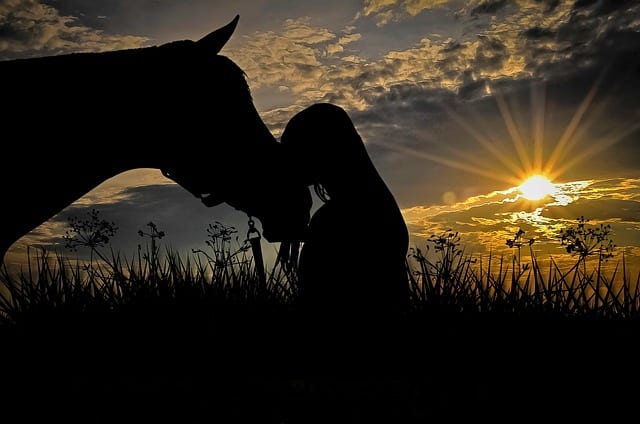
I have often been asked, can horses see in the dark? While I previously thought that they do see better than humans in the dark, I have always believed that horses as a prey animal, would not have good night vision. So I decided to do a little research to discover more about horse vision, and to determine if horses can see in the dark.
The horse has certainly better vision than humans in the dark. This is due to the fact that the Horse’s eye contains more rods to cones approximately 20:1, plus the horse’s eye has an area at the back of the retina known as the tapetum lucidum.
The tapetum lucidum is responsible for reflecting light back through the retina to the photoreceptors in the horse’s eye to improve it’s night vision. So horses can definitely see in the dusk or dimly lit conditions. While research has shown that horses are unable to distinguish objects in the dark, they can still make their way around the field or paddock. However, Horses do not have the same night vision capabilities as a dog or a cat.
The Horse’s Eyes.
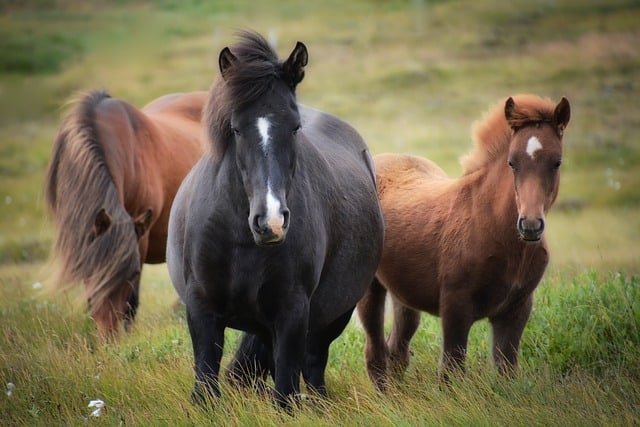
Pic from Pixabay.
The horse is a prey animal and as such he has large eyes that are situated on the side of his skull. He has a long nose, this plus the situation of his eyes allows the horse to graze the wide open plains having close to 360 degrees of vision. The horse’s eyes are also very sensitive to movement, which helped the horse to spot predators as he grazed, while his speed provided him an effective escape.
The Horse’s Vision
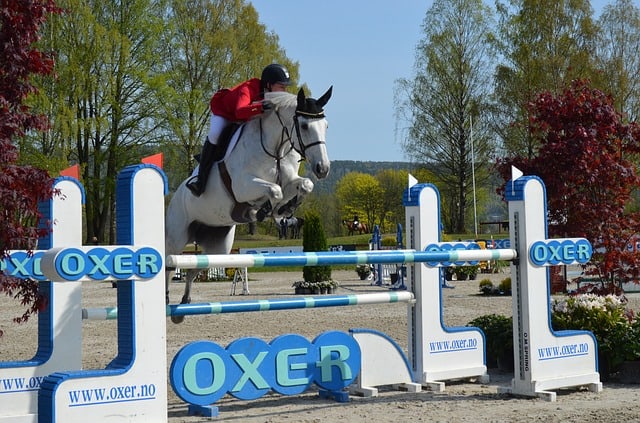
The horse as previously said has almost 360 degrees of vision, due to the situation of the eyes on their skull. This monocular vision allows the horse to see with each individual eye the surrounding area, which is important for it as a prey animal. However the horse does have a blind spot, directly in front of him about 3 – 4 feet, and directly behind him. He also has limited vision directly behind his head and on his back, and this is probably one of the reasons why the young horse often reacts strongly when being ridden for the first time. The blind spot directly in front of the horse means that when the horse is jumping a fence, the fence will seem to disappear for him prior to take off.
Due to his increased monocular vision, it means that the horse has limited binocular vision and depth perception. The horses’s binocular vision is just 65 degrees in a path directly in front of him. The horse can improve his range of binocular vision by raising or lowering his head to change his area of focus.
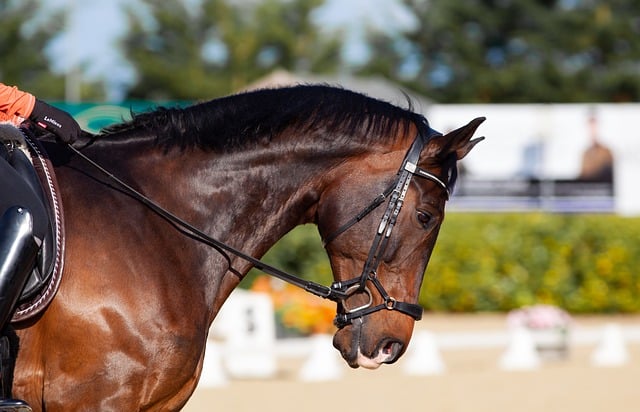
It is important to note that when a horse is ridden in an outline, this limits his binocular vision to the area of the ground directly in front of him. This means it is so important for riders that are jumping to allow the horse more freedom of it’s head and neck so that the horse can better focus on the jump while on the approach and close to take off.
Plus studies have revealed that close to one third of domestic horses are near sighted, i.e. they see objects that are closer to them more clearly. While most wild horses are far sighted and have better vision for objects that are further away. Horse’s do have limited accommodation, i.e. the ability to change the shape of their lens to bring objects into sharp focus. It was previously believed the tilting or moving their head up or down helped with this. Research has suggested that these head movements are more likely to do with the horse’s binocular vision as mentioned above.
Can horses see different colours?
It used to be thought that horses were colour blind, however research has shown that horses, while not having the same colour spectrum as humans, do have dichromatic vision. Dichromatic vision means that horses see colours in two wavelengths, which are variations of blue and green.
This means that other colours such as red or pink will be seen by the horse only as a variation of blue or green. The highly decorated and painted jumps that we see in showjumping are said to help the horse to better focus on the obstacles which enables it to jump the fences with more precision.
The Horse’s Night Vision the Science Bit.
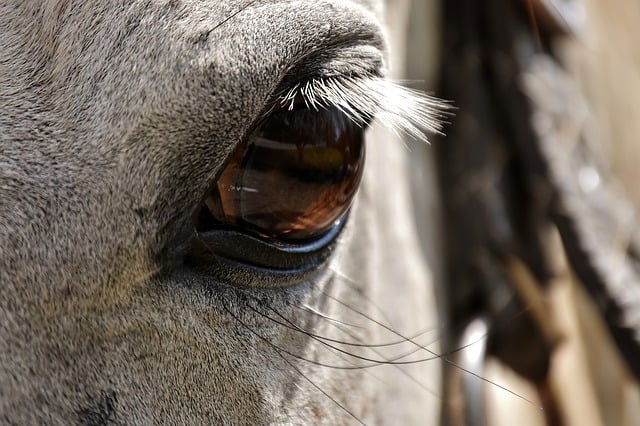
As previously mentioned when compared to a human the horse can see better in dimly lit or moonlit conditions. This is because the horse’s eye compared to the human eye contains more rods than cones the ratio is 20:1. The Rods are responsible for increased night vision, while Cones are responsible for colour vision. Along with this the horse’s eye has an area known as the tapetum lucidum at the back of the retina. The tapetum lucidum acts to reflect light back through the retina increasing the amount of light available to the photoreceptors of the eye. Both these facts mean that the horse has better night vision than humans.
This eye structure also allows the horse to have better vision on cloudy or dull days compared to bright sunny days. However studies have shown that although horses can see much better compared to humans in dim light such as dusk; horses cannot distinguish between shapes or objects in the dark, but will manage to find their way around the field or paddock and still fair better than their human friends.
Despite having better night vision, horse’s eyes do not adjust well to sudden changes in light conditions. An example of this is when jumping from a bright field into wooded area cross-country. It is important to build your horses trust in these situations to help him overcome any reluctance or fear that he may have.
Well horse’s do have pretty amazing eyes considering, and they definitely have us beaten when it comes to night vision. However, although they manage well enough in the field or paddock at night, they do not have the same night vision capabilities as a dog or a cat.
They also have limited ability to adjust to sudden changes in light as efficiently as humans, and therefore this should be remembered, as it can mean that your horse may be very spooky when being put in a horse box or lorry, or when jumping from light to dark.
The main thing is to approach any of the vision limitations they may have, with patience and understanding and you will be rewarded with loyal and willing partner.
Does Your Horse Have Kissing Spines? Check out the Signs & Symptoms of this Condition>>
